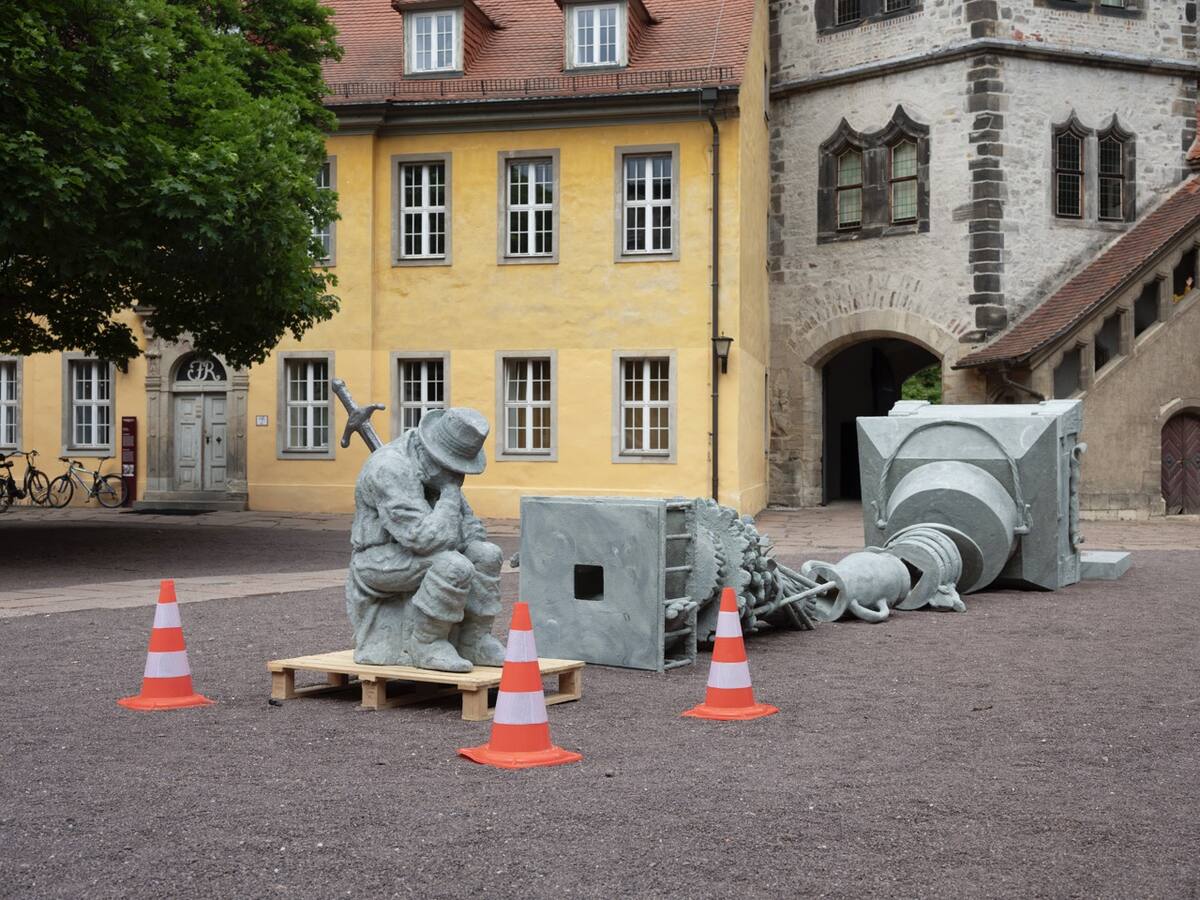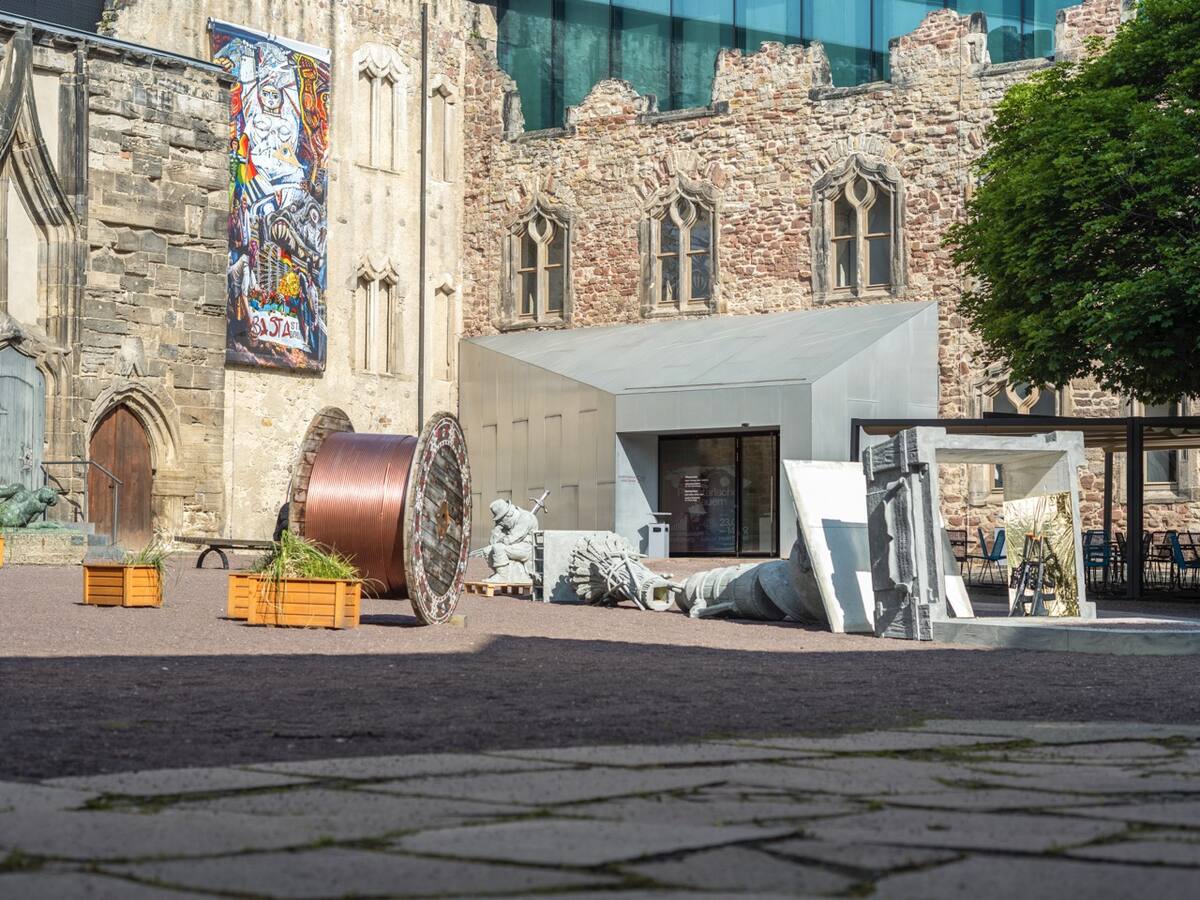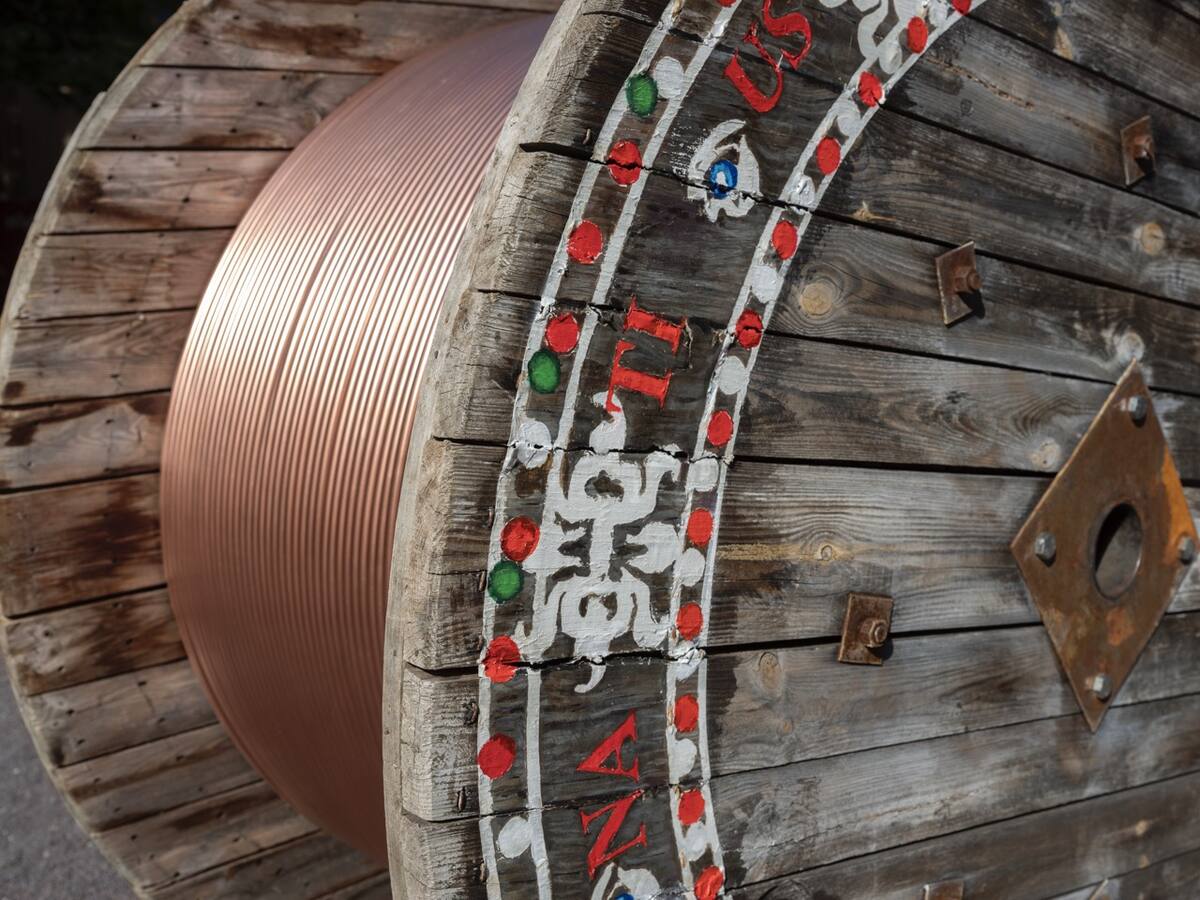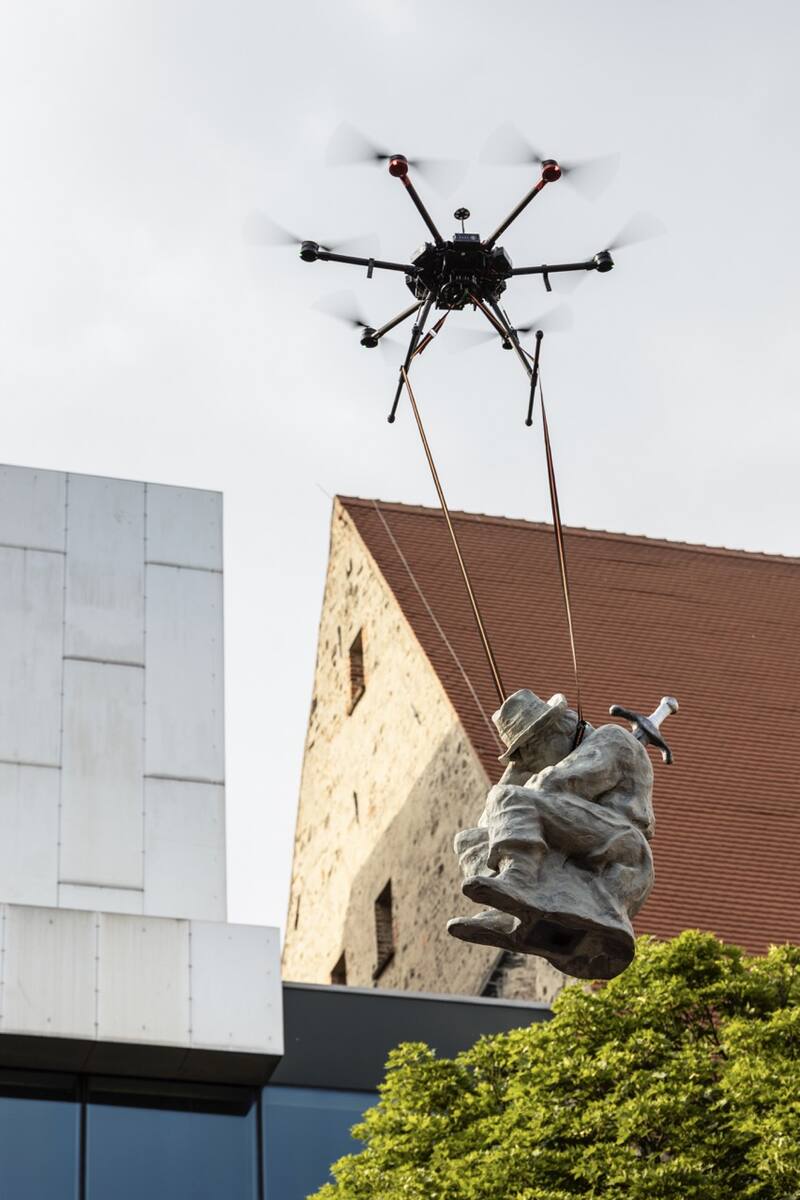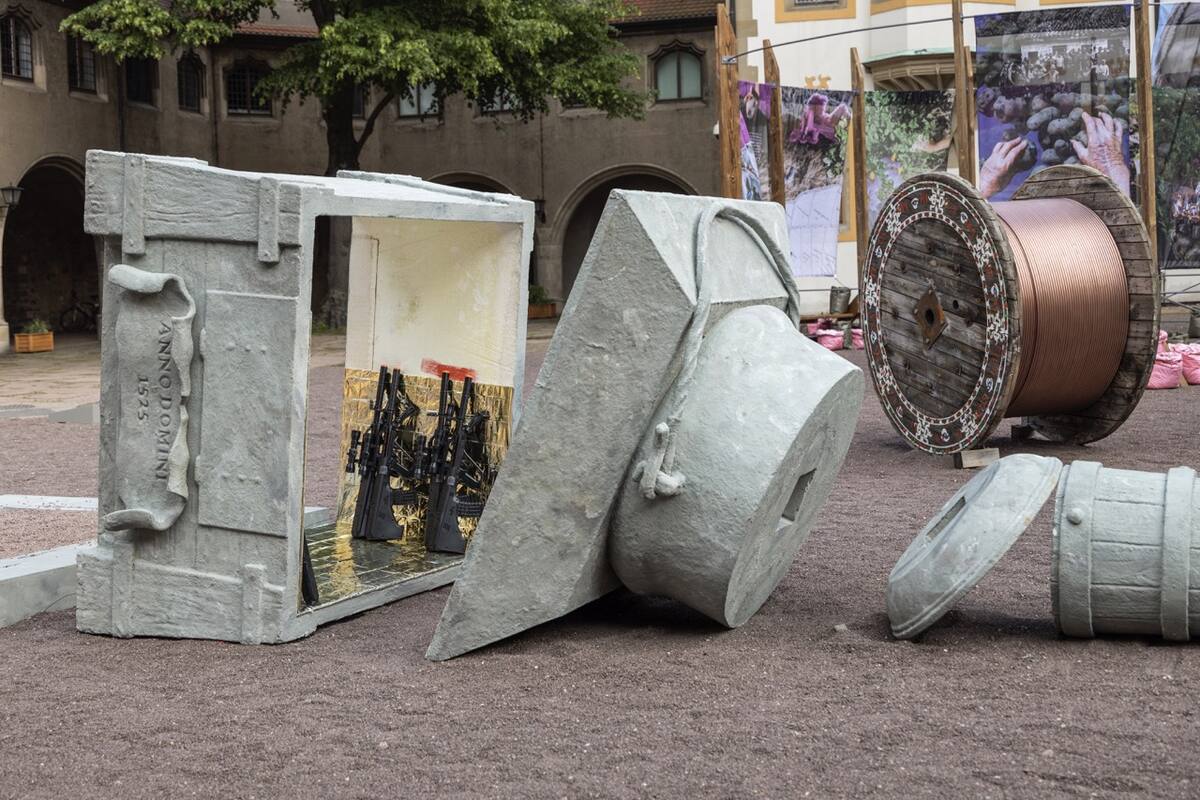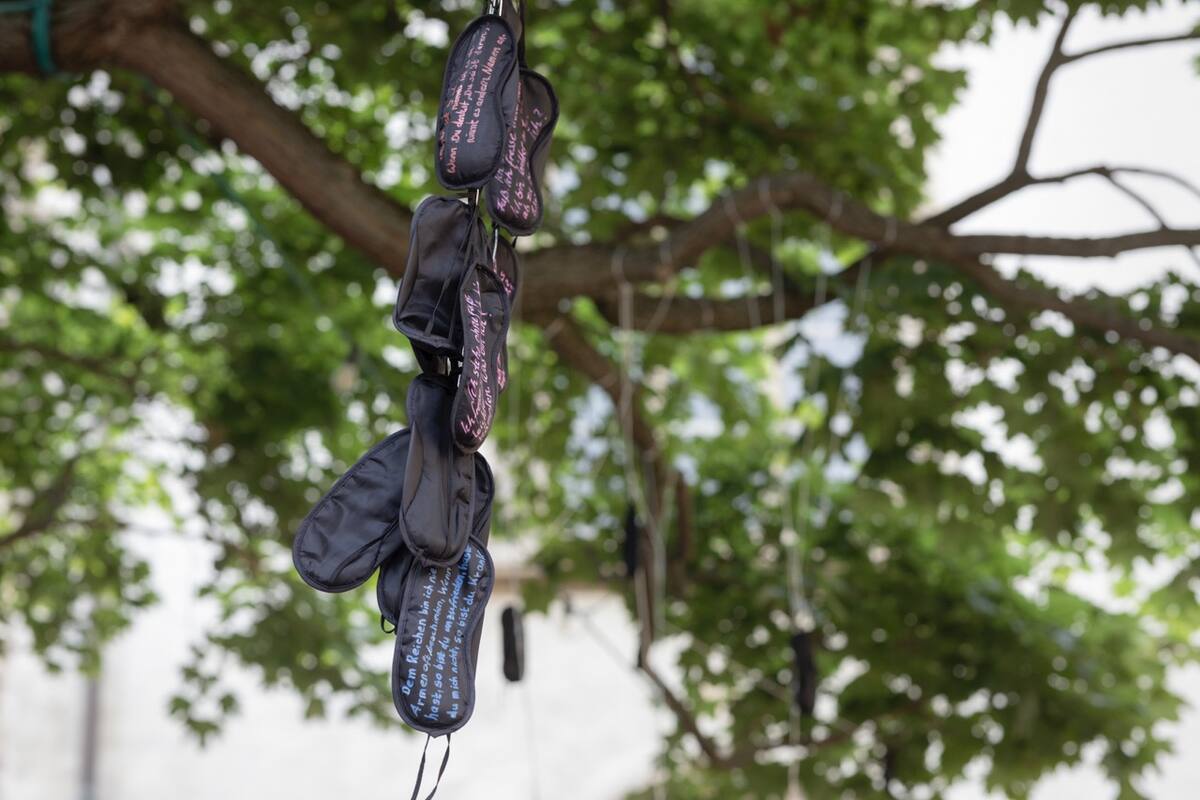Übergordnete Werke und Veranstaltungen
After Dürer
Personen
Media
After Dürer, 2025, installation view, 2025
© Andreas Siekmann / VG Bild-Kunst, Bonn 2025; photo: Michel Klehm
When Albrecht Dürer devised his Monument to the Vanquished Peasants in 1525, he sought to illustrate his theories of proportion and symmetry. The woodcut is included in his book on practical geometry; the monument itself was never meant to be built. Andreas Siekmann (born 1961 in Hamm; based in Berlin) reinterprets Dürer’s column – composed of wheat sheaves, farming tools and chicken coops, and topped by a slain peasant with the blade still in his back – by replacing the pedestal’s allegorical animals with modern symbols. Stacks of tinned food, a cable drum wound with copper wire, a discarded arcade claw machine, and a gun rack flank his polystyrene column like emblems of an economy that’s both threatening and threatened. The sculpture lies toppled in the courtyard of Moritzburg Castle, in vain, a cargo drone tries to lift the peasant’s body, reinforcing the crushing defeat of the rural population. Ironically, in Mühlhausen, about 150 kilometres away in Thuringia, a seven-metre-high bronze column based on Dürer’s design was recently erected to commemorate the Peasants’ War of 1524/25.

